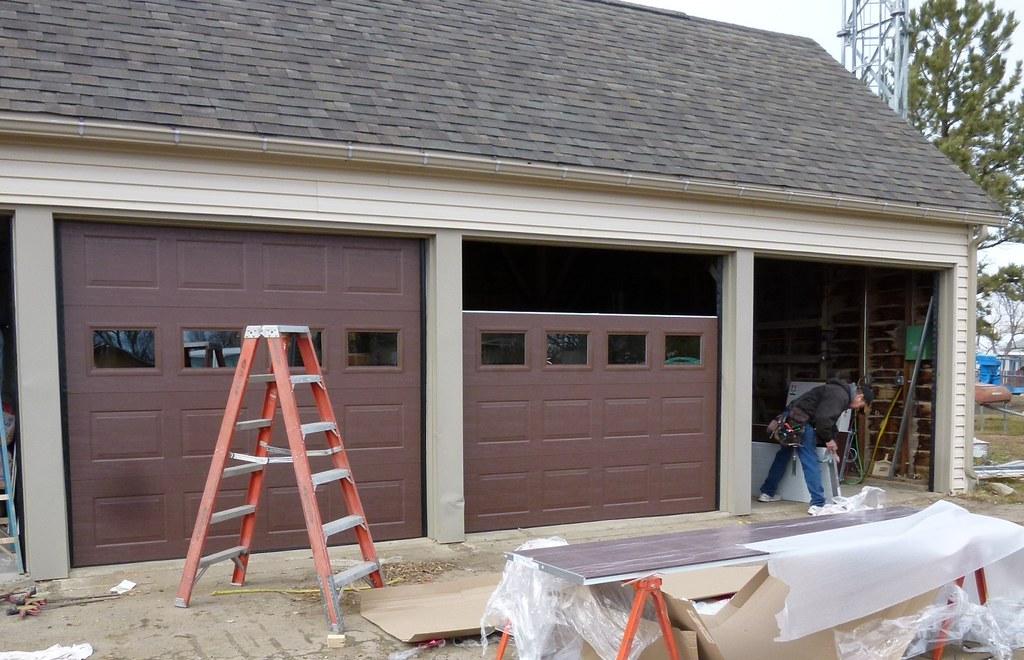Beitreten
Anmelden RegistrierenStartseite
Veranstaltungen
Blogs
Gruppen
Seiten
Weiterlesen…
Garage Door Spring Repair: Understanding Torsion vs. Extension Springs

Garage door springs are the powerhouse of your garage door system. They bear the door’s weight, making it possible to open and close smoothly with minimal effort. Without functioning springs, your garage door becomes heavy, dangerous, and nearly impossible to operate manually.
In this guide, we’ll break down the two main types of garage door springs repair services—torsion and extension springs—so you can understand how they work, their differences, and what to expect when they need repair.
Why Garage Door Springs Matter
-
Weight Support: Springs counterbalance the heavy weight of the door (often 150–300 lbs).
-
Smooth Operation: They ensure the door moves evenly and without jerks.
-
Opener Protection: Without working springs, the opener motor would strain and fail quickly.
The Two Types of Garage Door Springs
1. Torsion Springs
-
Location: Mounted horizontally above the garage door opening.
-
How They Work: Store energy by twisting around a shaft when the door is closed, then release it to lift the door.
-
Lifespan: Typically 15,000–20,000 cycles (a cycle = one open and close).
-
Advantages:
-
Smoother and quieter operation
-
More durable and longer lifespan
-
Better balance for the door
-
Safer when a spring breaks (less violent recoil)
-
-
Disadvantages:
-
Higher initial cost than extension springs
-
2. Extension Springs
-
Location: Positioned vertically or horizontally along the sides of the door, above the upper tracks.
-
How They Work: Stretch to store energy when the door is closed and contract to lift the door.
-
Lifespan: Typically 10,000–15,000 cycles.
-
Advantages:
-
Lower upfront cost
-
Good for garages with limited headroom
-
-
Disadvantages:
-
Louder operation
-
Shorter lifespan
-
Greater recoil risk if not equipped with safety cables
-
Which Type Does Your Garage Door Have?
-
Look above the door:
-
A single long coil on a shaft = Torsion spring.
-
Two long springs along the sides = Extension springs.
-
-
Your garage door professional can confirm and recommend the best replacement option.
Signs Your Springs Need Repair or Replacement
-
Door Feels Heavy – Springs are no longer counterbalancing the weight.
-
Door Won’t Stay Open – It drops when you let go.
-
Loud Bang from the Garage – A spring has snapped.
-
Gaps in the Coil – Indicates a broken torsion spring.
-
Uneven Movement – One side moves faster than the other.
Why Spring Repair Is Not a DIY Job
Garage door springs are under extreme tension and can cause serious injury or death if handled improperly. Risks include:
-
Springs snapping and recoiling violently.
-
Door slamming shut unexpectedly.
-
Damage to property or the opener system.
Professional technicians use specialized tools and follow safety procedures to remove, replace, and adjust springs correctly.
Garage Door Spring Repair Process
-
Inspection: Check both springs, cables, and pulleys.
-
Securing the Door: Door is clamped in the open position to prevent movement.
-
Spring Removal: Damaged spring is carefully released from tension and removed.
-
Spring Replacement: New spring installed and tensioned to manufacturer specs.
-
System Balance: Door tested for smooth, even operation.
-
Final Safety Check: All hardware and cables inspected.
Cost of Spring Repair in Orange County
-
Torsion spring replacement: $200 – $350
-
Extension spring replacement: $150 – $300
-
Full spring system replacement: $300 – $500
-
Emergency service: $250 – $450
How to Extend Spring Lifespan
-
Lubricate springs every 6 months with garage door installation lubricant.
-
Keep door balanced and tracks aligned.
-
Avoid excessive use—limit unnecessary openings.
-
Schedule annual professional tune-ups.
FAQs
1. How long do garage door springs last?
Torsion: 15,000–20,000 cycles (about 10–15 years).
Extension: 10,000–15,000 cycles (about 7–12 years).
2. Should I replace both springs at once?
Yes—this ensures even tension and balanced operation.
3. Can I open my garage door with a broken spring?
It’s not recommended—it can damage your opener and is unsafe.
4. Which is better: torsion or extension springs?
Torsion springs last longer, operate more smoothly, and are safer, but they cost more upfront.
5. Are springs covered under warranty?
Some manufacturers and installers offer 1–3 year warranties—check your paperwork.
Final Thoughts
Understanding torsion vs. extension springs helps you make better repair and replacement decisions. In Orange County, where garage doors are used daily, choosing the right spring type and having it installed by a professional ensures safe, smooth, and reliable operation for years to come.


